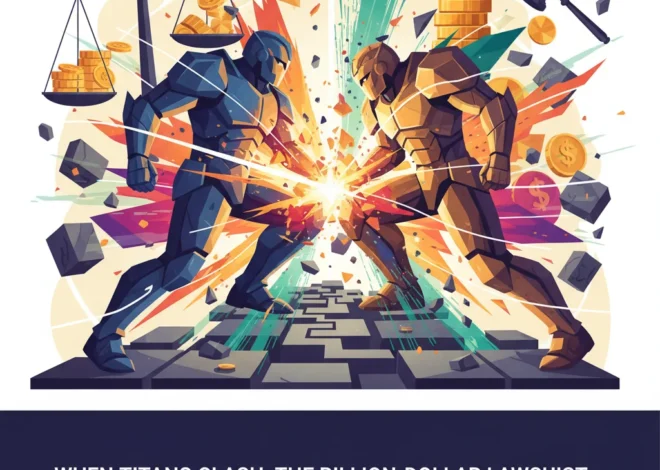
Beyond the Paycheck: How Private Equity is Sparking an Ownership Revolution in Japan
In the world of high finance, the narrative is often one of stark contrasts: the boardroom versus the factory floor, the shareholder versus the employee. For decades, the dominant philosophy, particularly in private equity, has been a laser-focus on maximizing shareholder value. But what if that model is beginning to evolve? A groundbreaking initiative in Japan, led by the private equity giant KKR, suggests a profound shift is underway—one that could redefine the relationship between capital and labor and offer a new blueprint for inclusive economic growth.
This isn’t just another corporate social responsibility program. KKR is spearheading an industry-backed push to grant blue-collar workers a direct financial stake in the companies they work for. This move aims to share the windfalls from successful investments with the very employees whose hard work makes it possible, a radical departure from the traditional playbook in a country known for its rigid corporate hierarchies. This initiative is not just a feel-good story; it represents a strategic pivot in modern investing, with significant implications for the global economy, the future of the stock market, and the very structure of capitalism itself.
Deconstructing the Old Model: The Private Equity Playbook
To understand the significance of KKR’s move, it’s crucial to first grasp the traditional private equity (PE) model. Typically, a PE firm raises capital from investors (like pension funds and wealthy individuals) to acquire companies. The goal is to increase the company’s value over a period of three to seven years through operational improvements, strategic changes, and financial engineering. The final step is to “exit” the investment, usually by selling the company to another corporation or taking it public through an IPO.
The profits generated from this sale are then distributed to the PE firm and its investors. While senior executives of the acquired company often receive equity incentives, the rank-and-file employees—the machine operators, logistics coordinators, and assembly line workers—have historically been left out of this wealth creation cycle. Their compensation remains a fixed cost on the balance sheet, not a variable tied to the company’s ultimate success. This model has been incredibly effective at generating returns for investors but has also drawn criticism for exacerbating wealth inequality and prioritizing short-term profits over long-term employee well-being.
Beyond the Bourse: Why Marseille's Luxury Real Estate is the Ultimate Alternative Investment
The Japanese Context: A Fertile Ground for Change
Why Japan? The choice is anything but random. The Japanese economy has been grappling with a unique set of challenges for decades, creating a perfect storm for this kind of disruptive idea. For nearly thirty years, Japan has struggled with stagnant wages and persistent deflation. The traditional promise of lifetime employment and steady, seniority-based pay increases has eroded, leaving many workers feeling financially insecure.
This economic reality has caught the attention of the government. Prime Minister Fumio Kishida has championed a vision of a “New Form of Capitalism,” which explicitly calls for greater wealth distribution and wage growth. KKR’s initiative aligns perfectly with this national agenda. As Hirofumi Hirano, KKR’s Japan chief, noted, the goal is to create a “win-win situation” that benefits both employees and shareholders, a concept that is gaining traction in the country’s highest political and financial circles (source).
It’s also telling that a foreign PE firm is leading this charge. Traditional Japanese corporations, often bound by decades of convention, have been slow to innovate their compensation structures. An outside force like KKR, armed with a global perspective and a proven track record, is uniquely positioned to introduce and legitimize such a transformative model.
The Blueprint for Shared Prosperity
KKR is not starting from scratch. The firm has been refining this employee ownership model for over a decade, most notably in the United States. A landmark example is the 2021 sale of CHI Overhead Doors. Upon the sale, roughly 800 of the company’s workers received an average payout of $400,000 each, a life-changing sum for many. This wasn’t a gift; it was their share of the value they helped create.
The core idea is to move from a mindset of employee expenses to one of employee ownership. This fundamentally realigns incentives. When employees are owners, they are more motivated to improve efficiency, reduce waste, and contribute innovative ideas. This boosts productivity and profitability, creating a virtuous cycle that benefits everyone. The table below illustrates the key differences between the traditional approach and this new model of stakeholder capitalism.
Comparison: Traditional PE vs. Employee Ownership Model
| Feature | Traditional Private Equity Model | Employee Ownership Model |
|---|---|---|
| Primary Goal | Maximize shareholder value for investors and firm partners. | Maximize value for all stakeholders, including investors and employees. |
| Employee Compensation | Treated as a fixed operational cost to be managed and minimized. | Viewed as a partnership, with wages supplemented by potential equity gains. |
| Wealth Distribution | Concentrated among senior management, PE partners, and limited partners. | Broadly distributed to include non-executive and blue-collar workers. |
| Employee Motivation | Driven by salary, job security, and traditional performance metrics. | Enhanced by a direct financial stake in the company’s long-term success. |
| Focus | Primarily financial and operational engineering from the top down. | Includes bottom-up operational improvements driven by an engaged workforce. |
KKR’s push in Japan is a formalization of this philosophy. The firm is co-founding an association with other industry players to promote and standardize these programs across their Japanese portfolio companies. This collaborative approach signals a belief that this isn’t just a proprietary KKR strategy but a new industry best practice for investing in the 21st century.
The £11 Billion Typo: Why the Car Finance Scandal is the UK's Next Financial Reckoning
The Macroeconomic Ripple Effect
If this model gains widespread adoption, its impact could extend far beyond the portfolio companies of a few PE firms. It has the potential to address some of the most persistent challenges in modern economics.
For Japan, it could be a powerful antidote to wage stagnation. A significant injection of capital into the hands of working-class families could boost consumer spending, stimulating domestic demand and helping the country finally break free from its deflationary cycle. This aligns with the broader goals of monetary and fiscal policy, creating a powerful new channel for economic stimulus.
Globally, it offers a market-based solution to rising inequality. Instead of relying solely on taxation and redistribution, this model builds wealth from the ground up. It strengthens the middle class, which is the bedrock of any stable, consumer-driven economy. For investors, this shift could also redefine how companies are valued. In the future, the stock market may place a premium on companies with strong employee ownership programs, viewing them as more resilient, innovative, and better-governed long-term investments.
Challenges on the Horizon
Despite its immense promise, the path to widespread employee ownership is not without obstacles. The model’s success is heavily dependent on a profitable exit. In a volatile market or an economic downturn, the promised windfall may never materialize, potentially leading to disappointment and disillusionment among employees.
There is also the complexity of implementation. Structuring these equity plans, communicating them effectively to a diverse workforce, and managing the financial and legal intricacies requires significant expertise. This is where financial technology, or fintech, could play a crucial role. Modern fintech platforms can help automate the administration of these complex ownership schemes, making them more accessible and transparent for both companies and their employees. In the future, one could even envision blockchain technology being used to create immutable, transparent records of ownership for a global workforce, simplifying cross-border equity distribution.
The .2 Trillion Typo: Unpacking the Monumental Foreign Investment Bet on America
A New Chapter in Capitalism?
KKR’s initiative in Japan is a bold statement. It challenges the decades-old doctrine of shareholder primacy and suggests that a more inclusive and sustainable form of capitalism is not only possible but also more profitable. By turning employees into owners, private equity firms are discovering a powerful new lever for value creation—one that unlocks human potential, drives operational excellence, and fosters a deeper sense of shared purpose.
The world of finance and investing is watching closely. If this experiment succeeds in the uniquely challenging environment of the Japanese economy, it could trigger a global movement. It may prove that the most valuable asset a company has is not on its balance sheet, but walking the factory floor, and that the best investment one can make is in the people who build the business every single day. This isn’t just about changing how we invest; it’s about changing who gets to build wealth from a thriving economy.


